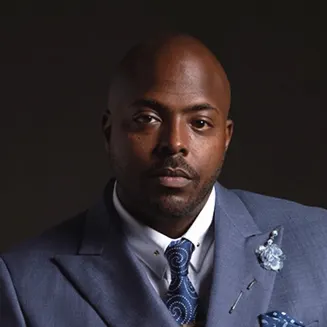Teacher to teacher: How I use dyslexia as my teaching superpower

By Khalil Munir
“Khalil, sit in the corner!”
“Khalil, go to the principal’s office.”
“You have to read, Khalil.”
I heard these phrases often when I was a student. It was pretty common for me to find myself in the “thinking corner” because I couldn’t write my own name. I was often sent to the principal’s office because of my attempts to escape the classroom. Sometimes, my anxiety about academic performance was so high that I would punch another student just to be sent to my familiar place, the principal’s office. I wanted to escape what I later discovered was my superpower: dyslexia.
As a kid, I didn’t have just dyslexia to deal with. Growing up in South Philadelphia exposed me to a lot of trauma, including a graze from a stray bullet by the age of 11. All I wanted to do was play basketball.
But my fourth-grade teacher, Ms. Jean Sugars, could see what I couldn’t: a quiet drive that needed an outlet. One day, she gave me a piece of paper that changed the trajectory of my life. She recommended that I take part in our school’s oratorical contest. I took her advice, performed a poem, and won. That began my journey in the performing arts.
The arts completely changed — and saved — my life. After I won the contest, Ms. Sugars got me involved in the performing arts training program at the New Freedom Theatre. I pushed back and even struggled at first. But once I dove in, I was hooked and immediately started learning lessons about myself. For example, I was unaware of how dyslexia would affect reading a script for an audition. Being put in that scenario forced me to find ways of adjusting, like getting scripts ahead of auditions to memorize the lines. These adjustments allowed me to thrive.
It’s funny how when you stop fighting and give yourself over to a situation, you often find joy and love in what you are doing. I did just that.
How the arts shaped my teaching
Now, as a teacher, my school experience is much different. I bring the tools I learned from the arts into my classroom. For instance, the theater affirmed my worth on a daily basis. This affirmation is something I give my students through a simple opening activity. Before each student comes into my classroom, they must say this password: “I respect myself.” My response to them is: “You’re beautiful.” This simple exchange of words sets the tone for the day. If you respect yourself, you respect the space, the work, your peers, and your teacher.
I also like to end each class with a positive affirmation:
I am a human being filled with love and dignity, and no one can take my space.
I will remove the negative.
I will bring in the positive.
What I believe I can and will achieve.
Yes, I can! Yes, I can! Yes, I can!
This closing affirmation allows my students to embrace all that is good before transitioning into their next class. It puts a positive closure on what they’ve achieved and learned during our time together. Hopefully, they leave my room with a mindset for success that can carry them through their day.
The power of vulnerability
While the arts definitely shaped my teaching, dyslexia has as well. At one point, my dyslexia seemed like an impossible hurdle. Now, I view my dyslexia as a superpower that allows me to discover and use tools to better my skills. I share these same tools with my students.
Among the skills I’ve learned: The power of being transparent and vulnerable. As a teacher, I intentionally change the narrative around vulnerability from a story of weakness to one of strength. When I tell students about my past struggles, I also tell them about the work I’ve done to overcome them. My students can relate to me on a personal level and know I was once in their shoes. With this connection, I start to break down barriers and build trust.
I encourage all teachers to have “story time” with their students. Share with them a personal hurdle you once dealt with and have now overcome. Let them know that you never stop doing the work to enhance these areas. And, once students gain new skills or information, they are then in a position to share this knowledge with others.
Lessons from Ms. Sugars
Ms. Sugars and I are still in contact, and she’s still a very influential part of my life. I learned from Ms. Sugars that the teacher-student relationship is a two-way street. It takes a commitment from both sides. But once you realize the power it has, the real work begins. You never know whose story you could change.

